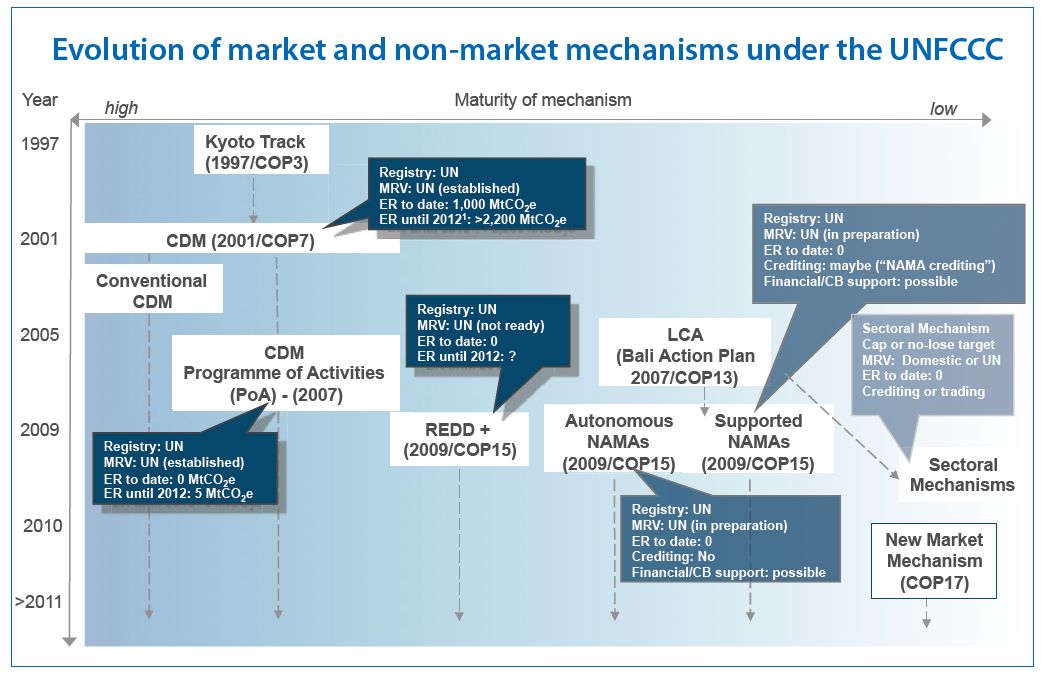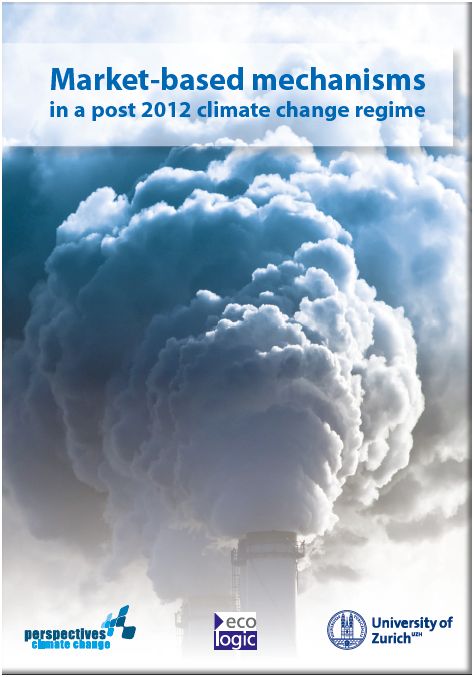This project is about assisting the UBA with understanding the political, strategic and practical issues relating to the negotiations around emerging or "more advanced" developing economies taking on new market mechanisms in a post 2012 climate regime. The three main tasks were: 1) understanding the incentives and barriers to the transition from the CDM to new mechanisms; 2) identifying the most promising countries, sectors and/or regions for taking on new market mechanisms; and 3) interim solutions for this transition. Ecologic Institute was the project leader.
A number of proposals have been put forward by parties involved in the UN climate talks to increase the scale of the Kyoto Protocol's Clean Development Mechanism (CDM) to a sector-based and more ambitious emissions reduction mechanism in the post 2012 climate framework. These proposals have centered around the idea that there is a need for the more advanced economies to gradually transition away from the CDM, and to take on an increasing share of the emissions reduction burden. The most discussed model is the EU proposal of crediting of emissions reductions below a "no-lose" target that would be applied to a broad economic segment.
In this project, Ecologic Institute, in partnership with Perspectives Climate Change and the University of Zürich explored a possible transition to such new market mechanisms. Empirical analysis was undertaken, evaluating which countries and which sectors are best suited for such a transition. Results show that those with high political willingness for market-based solutions include several Latin American, Small Island and European countries. In terms of sectors, power generation and cement production as well as buildings have the highest abatement potential - power, steel and aluminum have the most suitable sector structure.
The research also evaluated interim solutions that can continue market-based mitigation incentives while the transition to new market mechanisms is occurring: the CDM programmes of activities (PoAs), standardized baselines for CDM, and CDM discounting. The authors find that PoAs are most suitable as an interim solution in both a "centralized" and "fragmented" future for new market mechanism implementation, as they retain the CDM’s structure and thus the trust of existing market players, while encouraging expansion of mitigation activities beyond the project level to the sector level.
The research also highlights the critical role of demand for emission limitation or reduction credits as a driver for the development of flexible mechanisms. In the absence of tighter targets, the low demand and resulting low carbon price leaves few incentives for the development of new mechanisms.
Looking forward, the authors conclude that the climate regime may evolve in such a way that a more fragmented carbon market world develops into a more centralized set of rules over the next 3-8 years. Given such a context, Germany and the EU should seek to facilitate a transition to new market mechanisms in ways that can work in both a centralized and fragmented future, including
- engaging in bi- and multilateral cooperation to support the establishment of new market mechanisms, particularly with the countries this report’s empirical analysis has concluded to be good candidates for such cooperation
- facilitating creation of the institutional infrastructure necessary for participation in new market mechanisms
- offering financial and material support for data gathering and emissions assessment at the sector level
- creating venues for the exchange of technical expertise around e.g. data gathering and analysis





